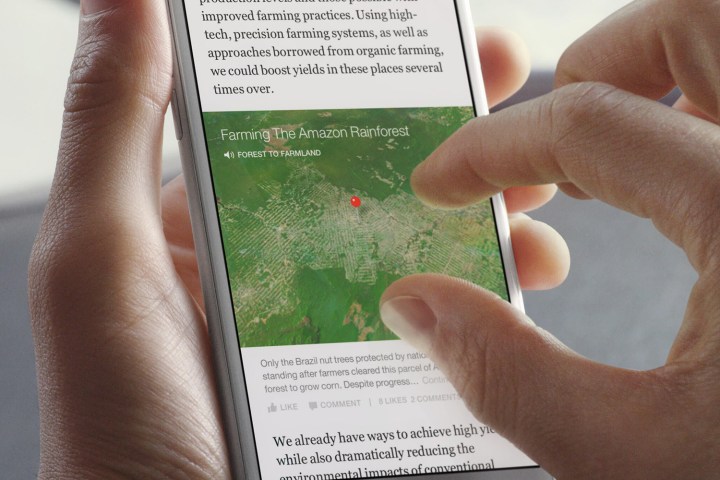
Integration with AMP, Google’s open-source effort to speed up mobile web pages and Apple News, an iOS format, comes in the form of an extension to the Instant Articles software development kit (SDK). Using code and Instant Articles markup, the new tool converts between the formats automatically, generating AMP and Apple News versions of every Facebook-optimized article. But they won’t all look the same — publishers will be able to add templates with custom fonts, colors, and captions.
“Our goal is to give publishers control overextending and modifying the Instant Articles building blocks to be the best storytellers on every platform,” Facebook’s Piyush Mangalick, a partner engineering director, said in a blog post. “This new flexibility with Instant Articles is part of our commitment to open standards of collaboration with the community.”
Facebook said the idea came from its Journalism Project, which aims to connect

In April, Forbes, Hearst, The New York Times, and others withdrew support for Instant Articles, and others — including Bloomberg, The Wall Street Journal, ESPN, CBS News, NPR, Financial Times, and Vice News have cut down on the number of articles they published through Facebook directly.
Partly to blame is the Instant Articles profit split. Publishers who manually place ads are allowed to keep 100 percent of the revenue, but those which opt for Facebook’s automatic ad placement get 70 percent instead.
Facebook’s tried to smooth out the platform’s rougher edges in recent months. A little over a year ago, the network launched Instant Articles in Latin America and opened Instant Articles to all publishers, and added support for 360-degree videos and photos in February.
Facebook also tried to give outlets greater freedom in design — and monetization. Since January, Instant Articles partners have combined multiple posts into a single digest; readers with the latest version of
But Facebook might be changing course. Reports suggest the social network’s pursuing original video, partnering with content creators like BuzzFeed and Vox to produce television-like shows from which it will take a 45 percent cut of ad revenue.
Editors' Recommendations
- Apple and Google are teaming up to make tracking devices less creepy
- ‘Exploring fitness’ won’t get Google TV anywhere near Apple Fitness+
- Google Pixel 6 pricing looks set to match Apple’s iPhone 13
- PayPal vs. Google Pay vs. Venmo vs. Cash App vs. Apple Pay Cash
- Together, Google and Samsung just may have a chance to beat the Apple Watch


